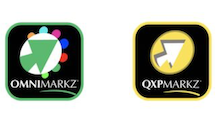According to industry analyst Pat McGrew, writing for drupa, workflow should be the infrastructure that allows you to do the most work at the least cost, but over time the solutions put in place to meet a specific set of needs, job types and clients begins to wear and rub.
Well-meaning team members add additional steps, circumvent steps, create spreadsheets to track things that the workflow software isn’t tracking, and before you realise what has happened, your workflow is a series of disconnect steps that is undocumented and inefficient.
The most expensive things you do in your printing plant every day involve talking to clients and physically touching their work. You talk to clients to better understand the work they want you to do, and you touch the work, in prepress or at other points in the process, to ensure that the client’s intent is rendered on to the substrate.
But every conversation and every touch has a financial impact. While you rely on workflow tools to aid the process, in most companies there are also spreadsheets, whiteboards and sticky notes used to gather and communicate information about the jobs-in-progress. It’s only natural. However, the more you talk and touch, the less money you make on the job.
How can you tell if your work is no longer flowing, but moving through a series of hoops and hurdles? Start by taking a quick look at what you have, and then begin looking at the emerging solutions that can help you become more efficient.
Assessing where you are to plan for the future
Workflow has never been the big talk track in printing. Some look at workflow software as a necessary evil. The complaints range from difficulties in installation and set-up to complicated user interfaces that take too much time to understand. The complaints have some basis in the reality of dealing with software that was often created to meet the needs of a specific print shop configuration before being marketed to the print industry at large. Then add the changes in print production over the last decade, and the odds that the workflow installed is perfectly suited to the work being done today are not good.
Some of the common symptoms of a workflow that is out of sync with the current print work mix are:
1. Trouble getting a larger number of short run/small batch jobs onboarded, into production, and out the door so they can be invoiced.
2. A growing number of overtime shifts impacting job profit margins.
3. Automation solutions that require manual touchpoints – islands of automation.
4. Installed software that no one is using.
5. Multiple processes for the same function – sometimes the result of mergers and acquisitions.
Any of these conditions will cost you time and money, but as they add up, they can seriously impact your ability to run profitably. Sadly, these situations do not fix themselves over time, and trying to add more software on top of a challenged workflow often only adds more cost without repairing the underlying problems.
Before you write that cheque for a new workflow solution, do a self-assessment that starts with a walk through your workflow. This is a best practice recommended by most workflow experts as the starting point for the move to operational excellence. Begin your workflow walk with a whiteboard. Identify the types of work you do at the highest level. List your equipment and your software. If you have asset lists, start with them – but be prepared to edit. The next stop is the point where you begin to work with a print job.
Some organisations have embraced web-to-print solutions, bought or built, while others still work by taking orders over the phone or exclusively through a salesperson or print broker. You may have all these onboarding points. You may discover that you have several web-to-print solutions as well as different onboarding methods depending on the salesperson or broker you work with. Make some notes on the ways work comes to you because this is the area cited in industry surveys as being the most disruptive. This is especially true for companies who have transitioned with their customers from long runs of static work that was on the same cadence year in and year out to shorter runs with more variations.
Once you look at how jobs come on board into the print shop, walk with the different types of jobs through the shop. Listen for how many phone calls back to customers are needed to confirm specifications, decide on substrates and adjust expectations on delivery.
As the jobs move into prepress and pre-flight, how many jobs are rejected for missing elements? Is everyone using the installed workflow solutions, or are private spreadsheets and notebooks the true measure of job progress? Review the job scheduling and watch for the number of reworks. Is there work that has been printed that is waiting on finishing? If you have production dashboards, how close are their indicators to what you found on your walk? Record everything you see.
Now go back to your asset lists and look for the software that is installed and compare it to what is being used. Do you have unused software packages for which you still pay maintenance? Here is a place to capture some savings. Look at every software tool that is installed and identify where it is used and how it moves the workflow process forward. Once you have this refreshed view of your print production workflow, it’s time to consider the trends and emerging technologies that can help you eliminate the inefficiencies and make money with your workflow.
Build your workflow platform
From the data-centric solutions that are informed by Industry 4.0 to the platform and framework orientations of an emerging set of Software-as-a-Service (SaaS) workflow options, the opportunity to remake your production workflow is in your grasp.
Since drupa 2016, the industry has seen established workflow solutions retool to take advantage of cloud-based computing, subscription models for both delivery and payment, and compatibility with an emerging set of platforms designed to allow a workflow architect to create a bespoke flow by plugging tools into platforms and frameworks.
Platforms as a method to allow disparate software tools to work together in a workflow provide distinct advantages. Consider a platform like Enfocus Switch, with more than 70 apps available for integration into the Switch platform. From CloudPrinter to handwriting generators, PDF tools and metadata handling applications, the Switch platform allows a workflow architect to assemble tools to optimise large segments of the production workflow.
HP offers a similar approach with its PrintOS platform, introduced at drupa 2016, and continuing to expand with new solutions added to the PrintOS marketplace regularly. The defining characteristic of these platforms is that applications used well-defined application programming interfaces (APIs) to integrate into the platform, making it easier to try a tool before committing to it. Expect to see more platforms introduced by the key workflow vendors and announcements of well-recognised tools available as plug-ins to existing platforms.
Ryan McAbee, Director of Production Workflow for Keypoint Intelligence, makes this statement on platforms, ‘The need for workflow platforms will only intensify as the industry converges and analogue-heavy segments like packaging undergo further digital transformation. All types of applications, regardless of the eventual printing method, require well-defined workflow steps from preflighting to colour management. As a result, print workflow platforms are well-suited to support the changing industry needs by leveraging best-in-class components that create a universal workflow for processing and routing orders intelligently in one system.’
Production printers should also take note of the emerging world of print customisation platforms that connect print buyers with print producers. Companies like Cimpress, Cloudprinter, Gelato, and InkRouter have developed global network platforms that make it easier to access print providers with different capabilities and delivery locations that can expand the footprint of any printer, anywhere.
If you aren’t quite ready for a platform, look for tools and suites that can be integrated into your current environment that can capture data on jobs at every touchpoint and relay that information to production dashboards that inform not only the production floor but management. In the modern print shop, it is essential to be able to identify every cost associated with every job to ensure that margins are met.
Making Money with workflow
The promise of a well-designed workflow is that it includes only the needed software tools, captures and provides usable data to production and business dashboards. It can be scaled up or down over time to accommodate new product lines and new printing and finishing technologies is operational excellence. It provides the infrastructure that eliminates unnecessary costs, unnecessary touchpoints and unnecessary handling.
In the 2019 InfoTrends European Software Investment Outlook, workflow was identified as the most overlooked R26 million (1.4 million euro) cost centre. The goal should be to turn that into a profit centre by proactively managing prepress activities, how jobs are sold and files are received. Your workflow assessment should help you identify the real costs of job onboarding, which is the single biggest point of cost in the workflow process. Other surveys support the identification of job onboarding – getting the job from the point of sale to the point of print – as a key element to investigate when looking for places to streamline.
If you have multiple web-to-print and file capture portals, this is a good time to consolidate on one. It should be scalable and secure. If jobs are arriving in email or through FTP, it is difficult to automate. The best solutions make it easy for customers to upload files and provide options to automatically check the files for assets, pre-flight, and ensure that all job specifications are complete for the job. That alone can save hours of time. More sophisticated solutions might automatically route jobs based on business rules you establish, again taking the people out of that process.
Remember that any of these solutions will require a keen understanding of your work processes and time to set up and implement. Once done, however, the cost savings will follow. And that is how you make money with your workflow: you take costs out that shouldn’t be there. Follow the same path as you look at Print MIS solutions, ERP solutions, approval management systems, and connectivity to the business platforms for invoicing and payment management.
To submit your news please, contact journo@practicalpublishing.co.za
Read the top 5 stories weekly on WhatsApp or sign up to our newsletter.
DRUPA
https://www.drupa.com





















